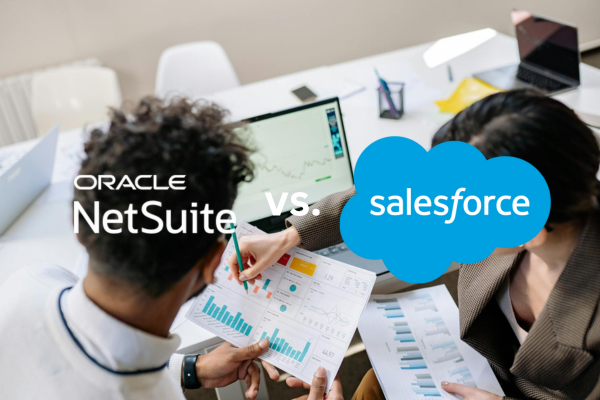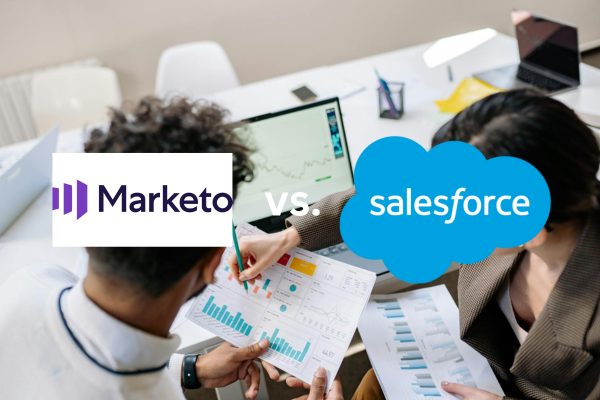Up until a certain point, an organization can make do with an outdated customer relationship management (CRM) platform. It might not provide every feature and functionality the business needs, but it offers an acceptable level of support — and if the team needs a specific tool outside of the CRM, they can simply use it on the side.
But this kind of patchwork solution only works to a point. “Making do” with an outdated CRM system is a little like duct-taping a fallen bumper back onto your car; it might hold for now, but it’s not exactly a permanent solution. Of course, some might ask why someone would drive a duct-taped car — or use a clunky CRM — in the first place. The answer is simple: cost.
Implementing a new CRM can be expensive. As we’ve written before, businesses usually aren’t just paying for new technology; they also need to invest in professional guidance, product customization, and continued support. These costs can stack up.
Some organizations might prefer to put off the expense; after all, if they can “make do” with current tools, why make the investment? But at a certain point, struggling with an outdated CRM isn’t worth the savings.
In this blog, we’ll spotlight a few warning signs that your organization needs a new CRM — and what executives should do to implement one.
1. Swivel-Chair Processes Are Limiting Achievement
How many platforms do your team members need to access when completing a task? As discussed earlier, teams that rely on clunky CRMs may turn to third-party tools to compensate for missed functionalities. This tactic can provide much-needed support — but might come at an efficiency cost.
For example, let's say that a worker uses two control panels, one plugged into his office and the other in an adjoining room. The worker does most of his work on the first control panel but needs to make a 30-second walk over to the second panel to complete it. The delay adds about a minute to his project completion time.
Now, a minute might not seem like much. However, if this worker does this task 60 times per day, the seemingly short walk will demand a full hour of his workday.
This is what we call a swivel-chair process — a procedure that requires a worker to “swivel” between platforms when completing a task. This idea applies to CRMs, too; whenever an employee needs to leave their CRM to open a third-party tool or spreadsheet, they lose time and productivity potential.
If your team relies on a constellation of platforms to complete their daily work, they are almost certainly losing time. Having a modern CRM — like Salesforce — that brings all necessary data and tools under one proverbial roof can eliminate “swivel-chair” inefficiencies and dramatically boost your team’s achievement potential.
2. Your CRM Lacks Widespread Employee Adoption
If your employees aren’t using a CRM, it may signify that the platform simply doesn’t provide enough value.
“Poor adoption is typically due to employees not having a full view into the customer, or outreach, or whatever they’re using the CRM for,” Scott Filchak, Gerent’s VP of Customer Success, explained in an interview.
If employees don’t find the official technology or procedures helpful, they will develop their own approach. This compensation can be a mixed blessing. On the one hand, work is still getting done. On the other, employees use nonstandard processes that can lead to inconsistent outcomes and undermine knowledge transfer.
Here’s a quick example:
A veteran client service representative needs leave coverage. The rep shares the client’s basic details with a peer via the CRM. However, when the colleague takes over, they find that a lot of the information wasn’t recorded properly.
They end up needing to dig through spreadsheets and conduct verbal interviews with the departing representative to get up to speed — and even then, they might still end up missing key details.
CRMs need to be functional and easy to use given a little training. If your platform misses one or both of those marks, it probably won’t provide value to your team.
3. Your Team Juggles Multiple Sources of Truth
If your CRM doesn’t deliver a single, real-time view into your customers, you’re going to have customer service problems.
April Bollwage, Gerent’s Education Practice Lead, provided an example of both consequences during an interview when she reflected on a few of the problems she faced while working in the admissions department of a training organization.
“We were able to record our admissions notes in our student management, but once that student arrived on campus, we had no idea what was going on. So, if we received a customer service complaint post-admission, we would need to call the training center and ask student services to forward emails,” she said. “There was no transparency at all.”
As a result, she explained, the student often ended up needing to reiterate their problem or — even worse — share details about themselves that they had already given the organization. All in all, the experience left students feeling undervalued and frustrated.
Having a CRM that, like Salesforce, provides a single source of real-time truth eliminates these problems. If a customer ever has a concern, any representative can pull up their account and see where the person is in their journey, what interactions they have had with the company in the past, and any concerns they might have filed.
This is the selling point for Customer360, Salesforce’s unified marketing, sales, commerce, service, and IT platform. This integration hub provides a shared source of truth that is updated and maintained in real-time.
“I call it, ‘one ear, one voice,’” Eric Satterthwaite, Gerent’s Senior VP for Manufacturing, Automotive, Travel, and Education Sales, explained.
“Every detail a company has on a consumer is recorded in this centralized space, so no matter who that customer talks to, they never need to repeat themselves or feel frustrated that the company doesn’t ‘get’ or care about them. Because reps speak with ‘one voice,’ the customer also gets a consistent brand message throughout their journey,” he said.
It’s a fact — if your CRM doesn’t deliver a shared source of truth, your customer service will not be up to par.
4. Your CRM Isn’t Equipped to Scale or Evolve
You wouldn’t wear shoes or clothing that doesn’t fit anymore, so why would you expect your organization to use a CRM it has outgrown?
Organizations change. They pivot and scale — and when they do, their CRMs need to shift accordingly. This can be a problem for companies that rely on clunky or outdated CRMs, according to Filchak.
“Older CRMs have a harder time adapting to major changes,” he explained. “You start to see growing pains if a company tries to stick with a product that needs to — but can’t — change.”
A recent Gerent client story provides an example of this. The customer, a specialty producer of temperature-control products in North America, wanted to pivot its sales approach and achieve global scale. However, it didn’t have a CRM to support its up-scaled efforts; the team relied mainly on spreadsheets to track its incoming opportunities.
To resolve the problem, the company worked with Gerent to implement the Salesforce products that it would need to track its incoming leads, facilitate sales outreach, and understand how specific opportunities could contribute to its market share in a given region. After completing the project, the Sales team was better positioned to expand their efforts and tackle the scaling challenge head-on.
The lesson here is clear — companies need CRMs that suit them. There’s no sense in keeping outdated infrastructure if it won’t support your business as it grows.
Does your organization need a new CRM? Here’s what you can do.
If you believe your organization needs to upgrade its CRM, you need to reach out to an implementation partner who can help you define your technology needs and transformation goals.
At Gerent, we take on this challenge every day — and help organizations implement Salesforce products that will allow them to achieve their ideal future states. Contact us today to learn how we can help you update your digital infrastructure with Salesforce!










